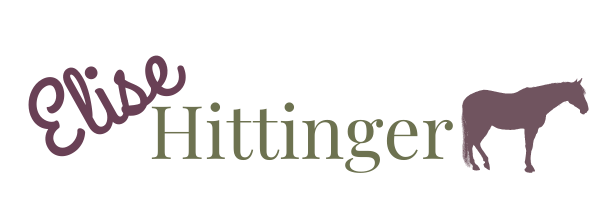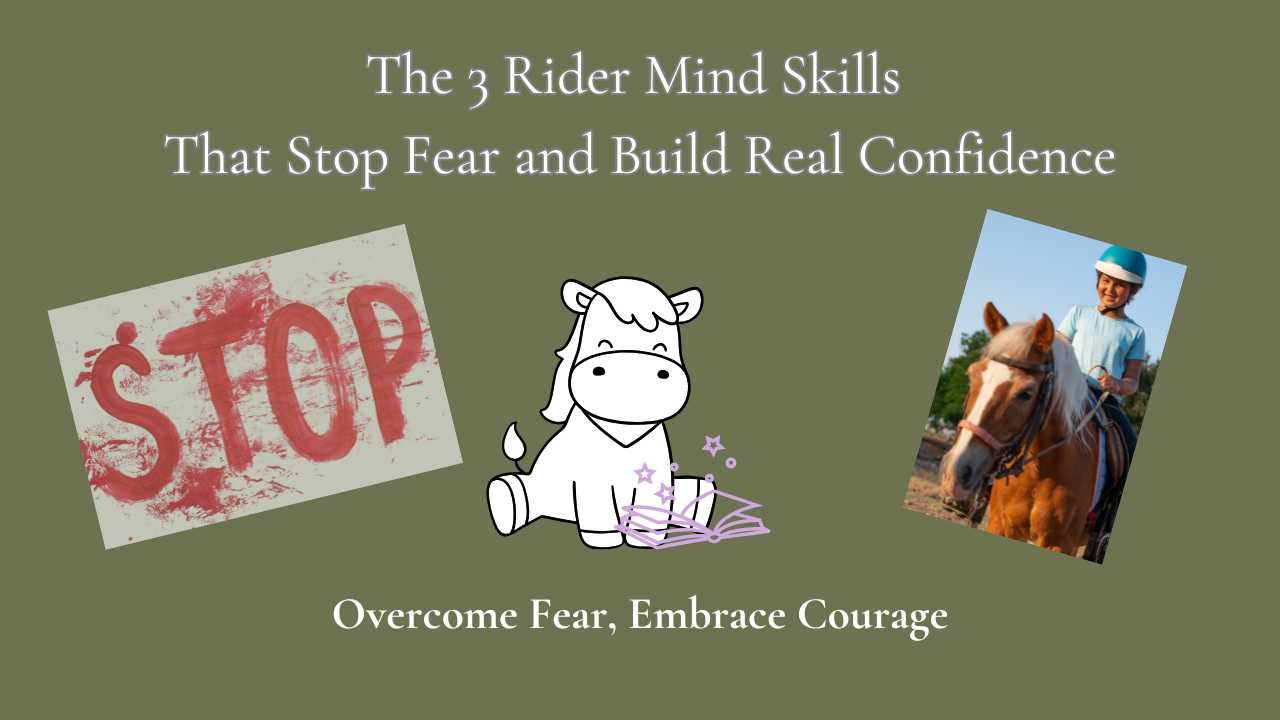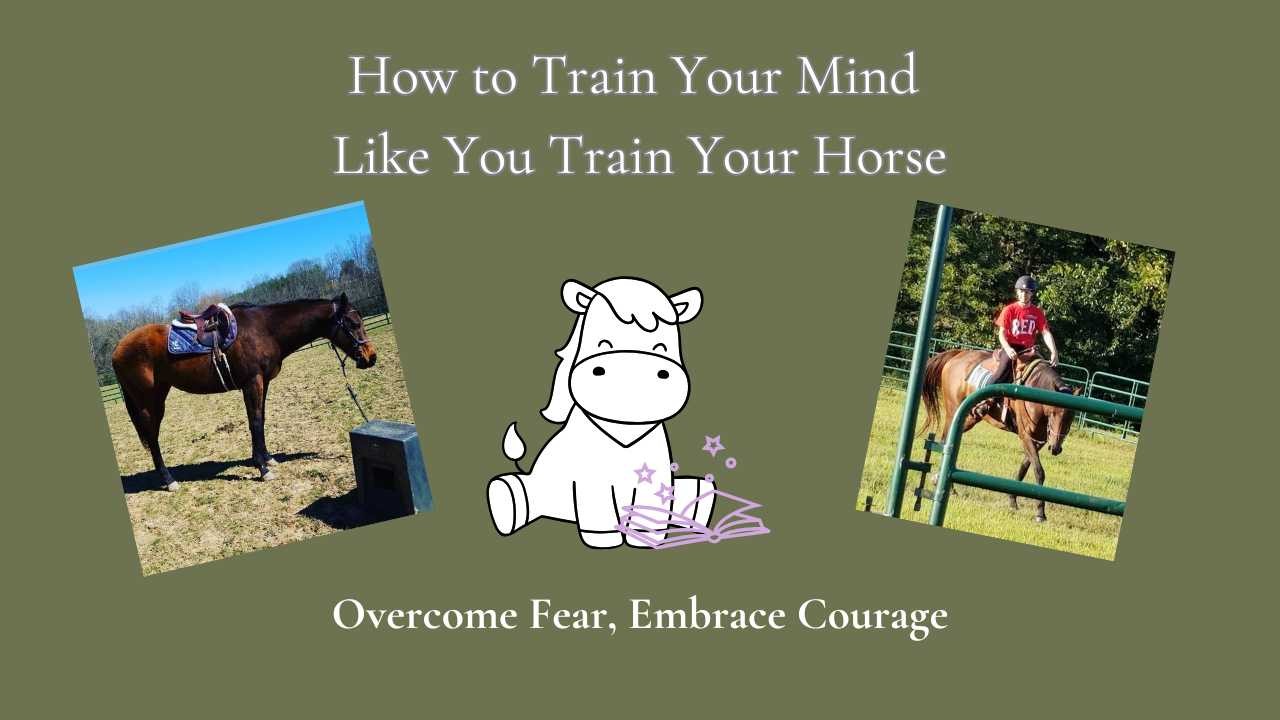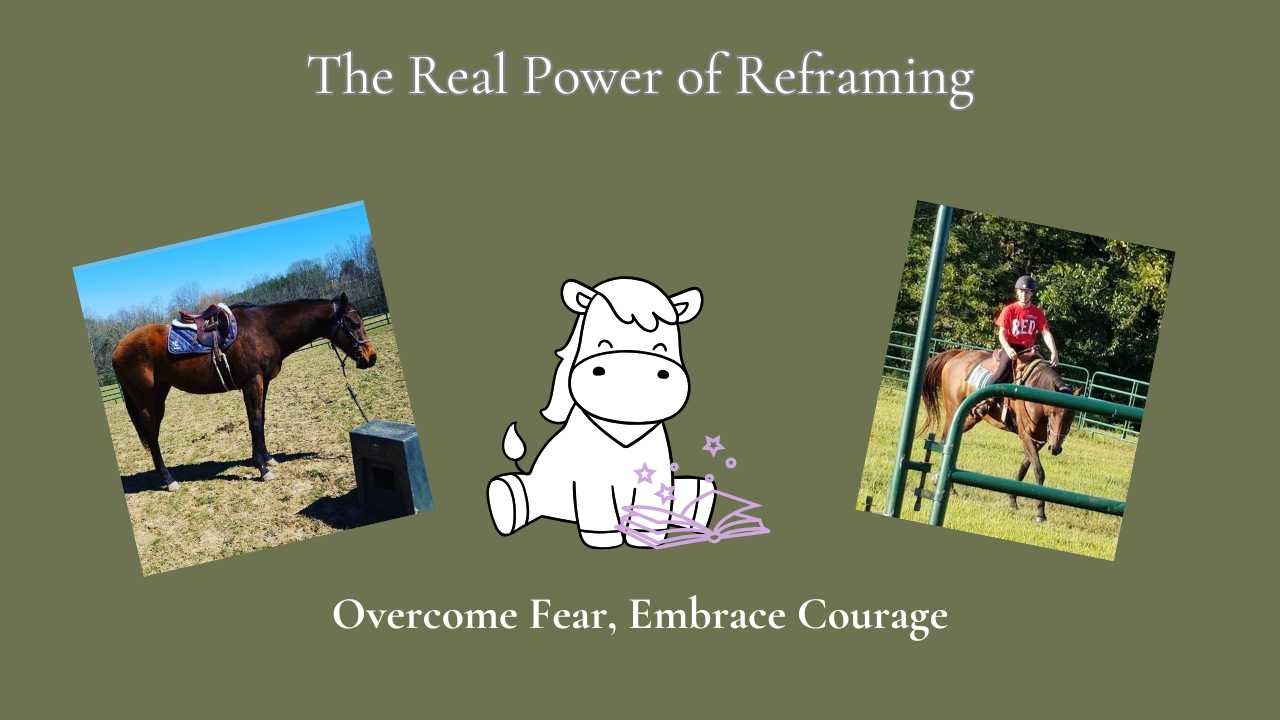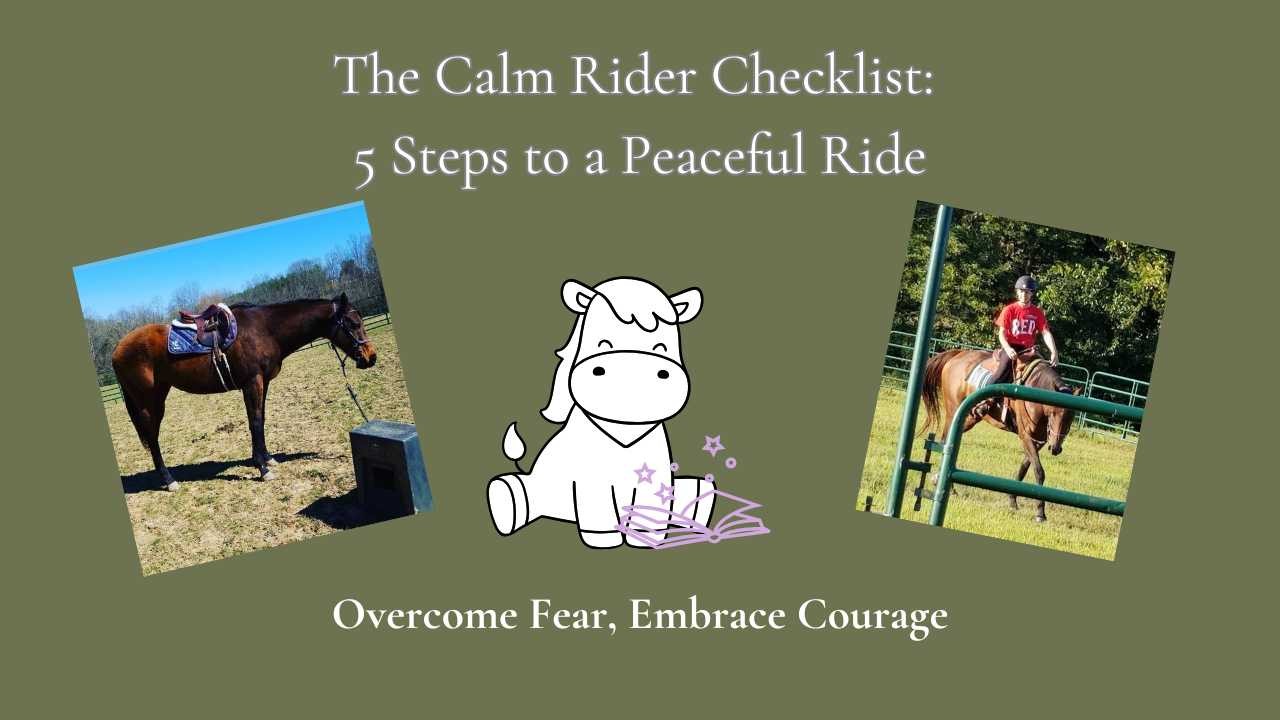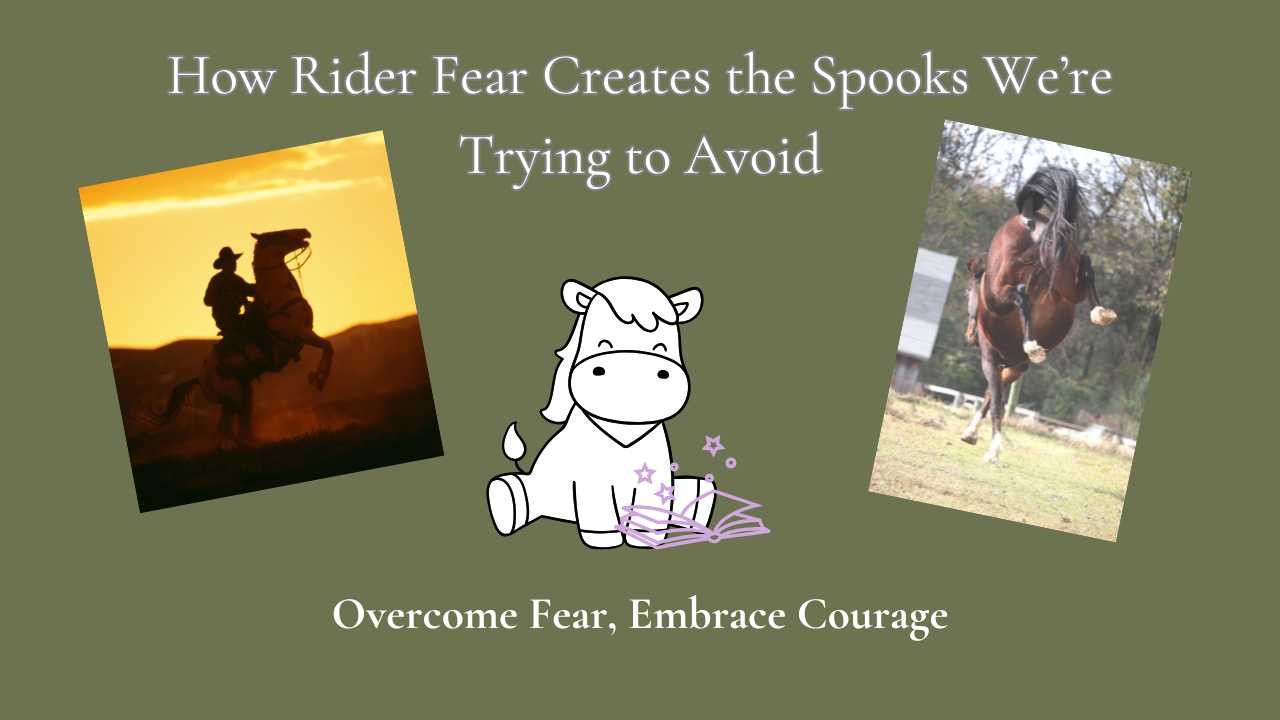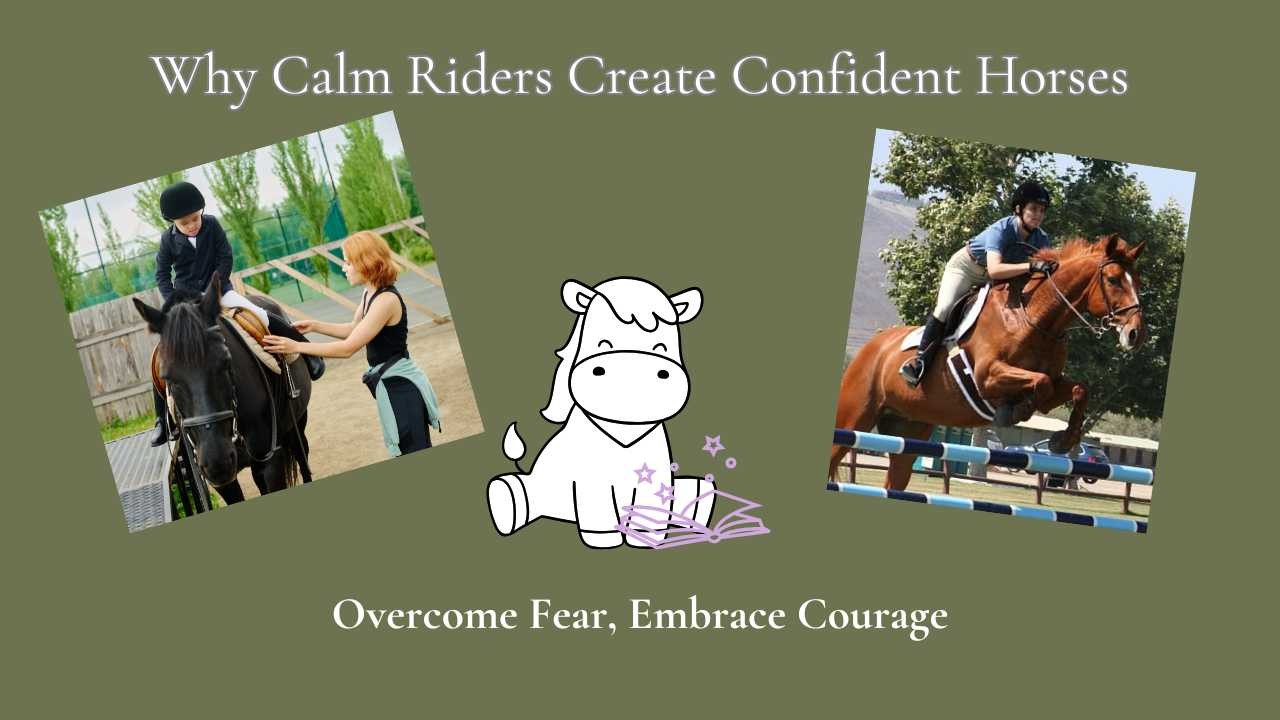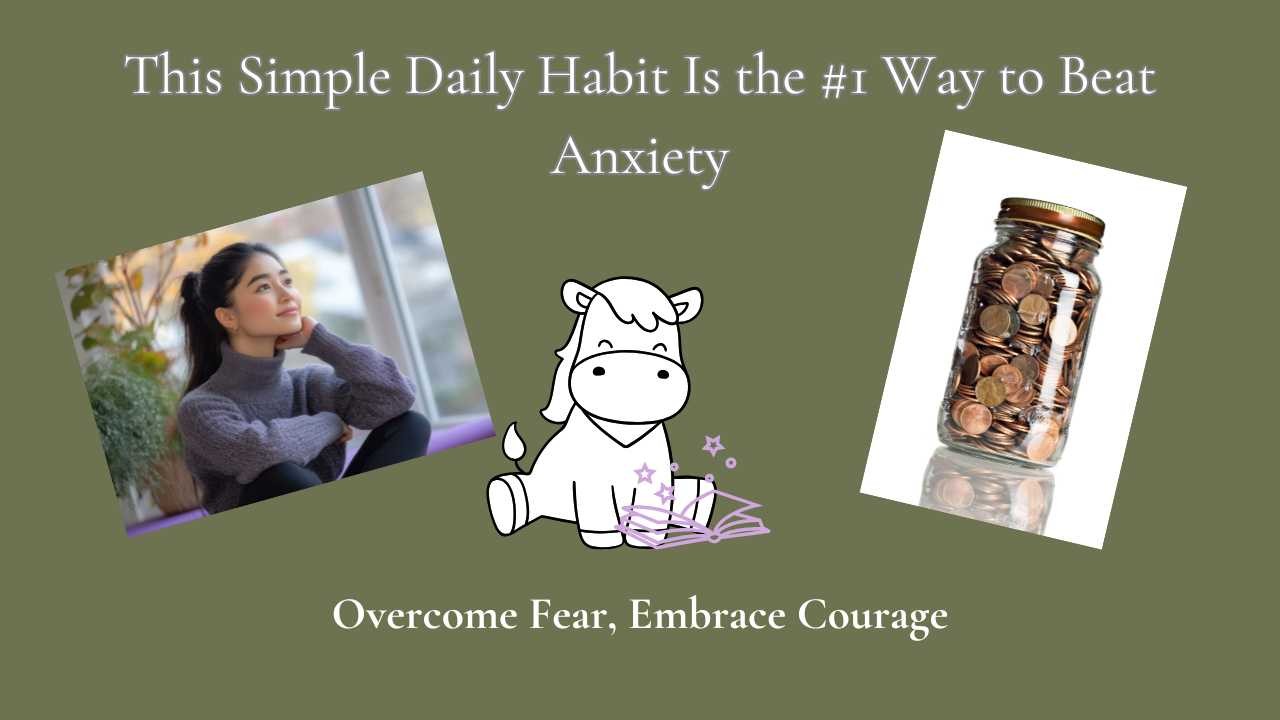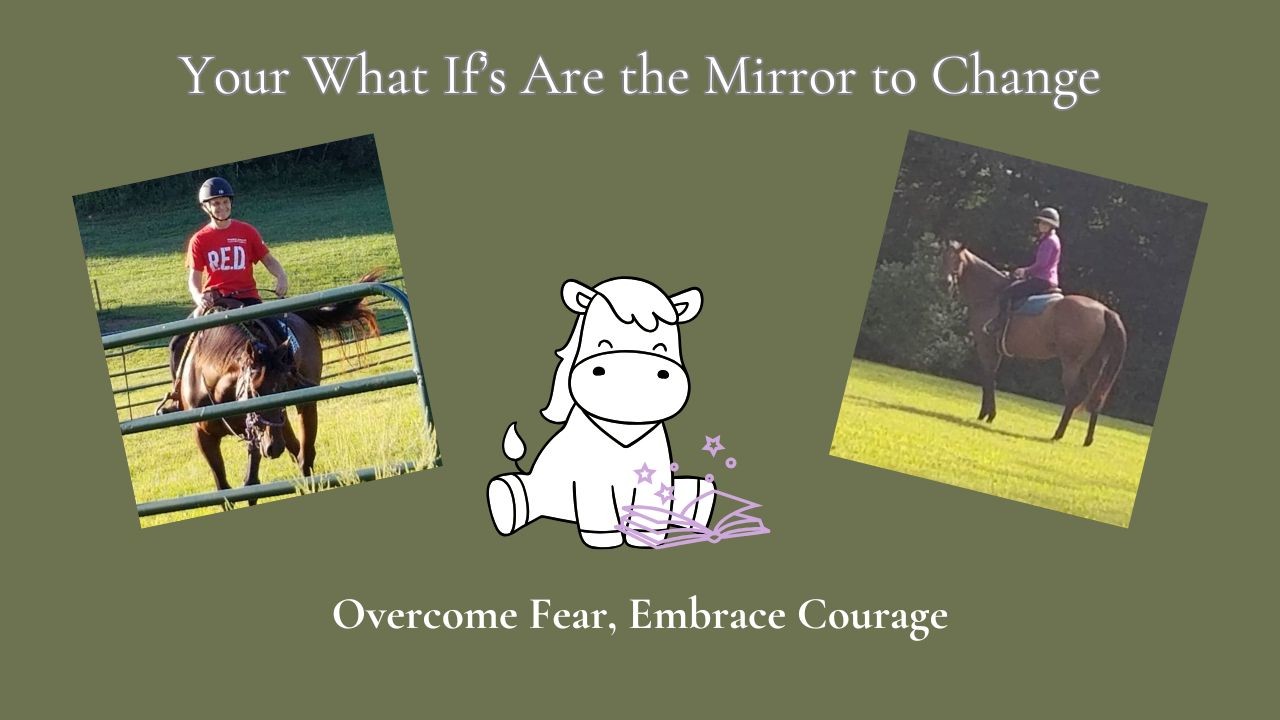
After my accident, every ride felt like a loop of “What if my horse rears?” That fear shaped everything. Then I bought Taika—a horse who had flipped in the starting gate and fractured her skull. Her rides were dominated by “What if I rear again?” I could feel it in her body, her breath, her hesitation. We were mirrors for each other. Our shared fear created a feedback loop neither of us could escape.
It took years to unravel. We discovered Taika had kissing spine—the physical root of her rearing. Fixing that was the first step. The second was healing the emotional memory. That took time, trust, and patience. But once her pain was gone, and the fear softened, she became a calm, willing partner. And in helping her heal, I healed too.
Together, we created a new “What If.”
What if we have a calm, relaxed ride?
What if we have a calm, relaxed ride?
That became our mantra. Sometimes she leads it. Sometimes I do. But we always finish in peace.
Here’s what helped us change the story:
- Find the root. Behavior is communication. Look for physical pain, emotional triggers, or past trauma—on both sides.
- Reframe the memory. Laughter helped us rewrite the story. We stopped replaying the worst moments and started celebrating the small wins.
- Choose a new “What If.” Make it your mantra. Say it before every ride. Let it guide your energy and expectations.
Your horse’s behavior isn’t a problem—it’s a message. And sometimes, it’s a mirror. When you listen to it, honor it, and respond with curiosity, everything begins to shift.
I would love to be the mirror for your "What if's" and help you find your peace and calm riding again. Schedule a Calm-Ride Strategy call (it is free) and we will look at how to change your what if's and give you a plan that works for you. Get on my schedule here!
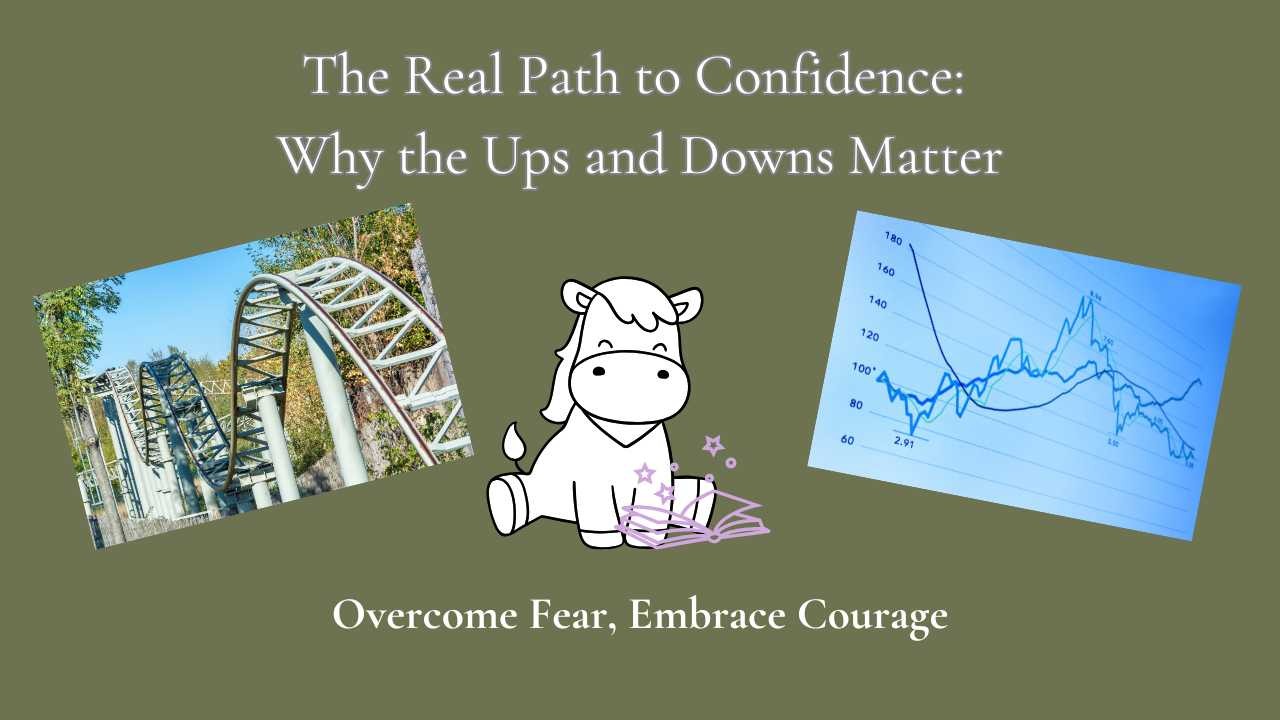
I was curled up in a fetal position, once again laying on the grass instead of on my horses back while he raced around like an escaped convict. I can remember the sun on me feeling so good and the smell of the grass was heavenly. Then the ring crew told me I had to get up and that I couldn't just lay there like a rag doll. The worst part? I had fallen off in front of Bill Gates. The best part, I had a chance to learn from my mistakes.
I had gone into the ring, so scared that I was like a stiff board trying to guide my poor horse jumping his heart out for me. This was one of those down moments that really shaped the depths of anxiety, my first time competing on the Grand Prix field at 1.2M, and it also gave me a peak at what the joy could be as I moved into confidence at that level. I remembered that same anxiety when I had my first competition at .90M. I was terrified. And yet, now, that seemed like a piece of cake with chocolate on top. The anxiety at the lower levels had fallen away and the joy filled me up.
It is important to look at the downs and not just hide them under the rug. Really see what you can learn from them and grow into. Confidence is a muscle that needs to be worked, stretched, reshaped as the anxiety falls away and the confidence builds. The ups and downs matter. They keep us going on our journey to enjoying life instead of sitting on the couch letting anxiety rule our world.
If you’re stuck in one of those “fetal position in the grass” moments—or just feeling like confidence is miles away—I want you to know: you’re not alone, and you don’t have to figure it out by yourself.
I help riders like you turn those tough moments into steppingstones. Together, we’ll create a personalized Calm-Ride Strategy that helps you navigate the lows, celebrate the highs, and build lasting confidence in the saddle.
Ready to see what your next peak could look like? Let’s map it out—grab your free Calm-Ride Strategy Call today.
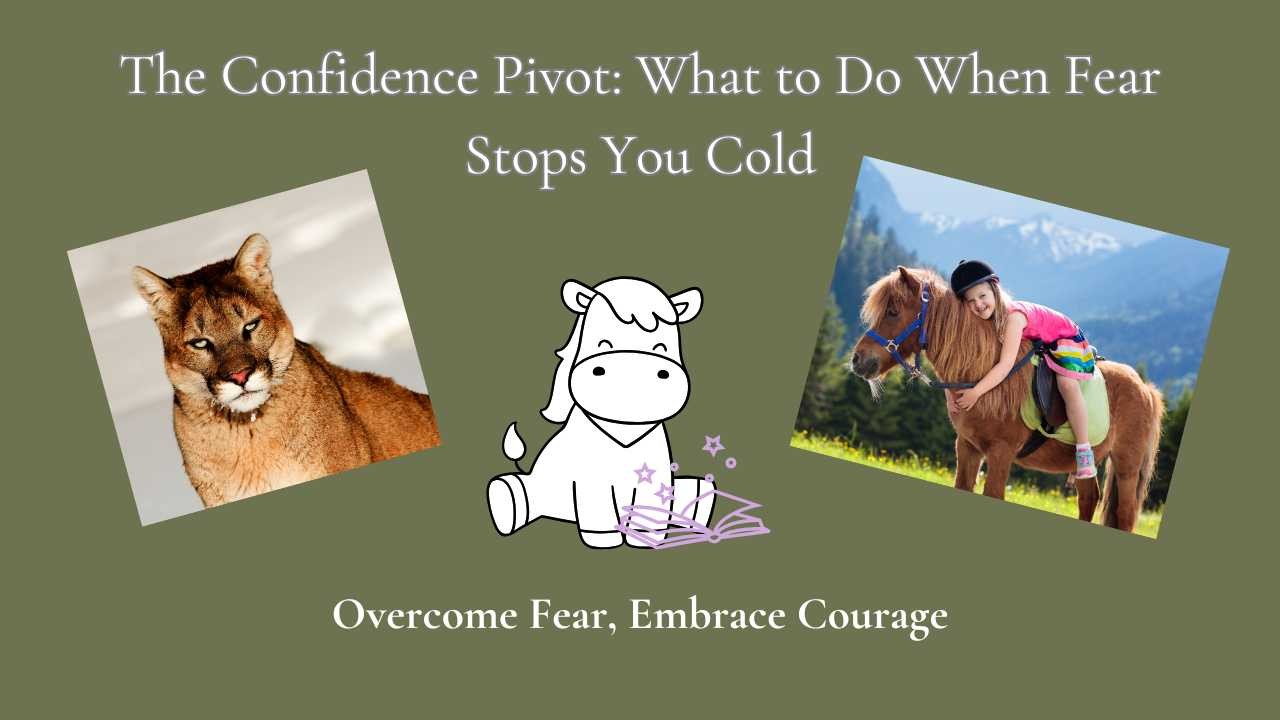
There’s a moment—maybe you’ve felt it—when fear hits so hard your body freezes. Your brain goes offline. Your breath disappears. And all the confidence you thought you had? Gone.
I’ve been there.
Years ago, a mountain lion jumped onto the back of my pony while I was riding. It missed me by inches, but ripped out part of her tail. I didn’t fall off. I didn’t scream. I was frozen to her neck. But I stayed on. I survived. And in the aftermath, something shifted.
I realized: I can ride!
I had faced the worst-case scenario—and I was still here.
That’s the confidence pivot.
It’s the moment when fear tries to shut you down, but something deeper rises up. Not bravado. Not perfection. Just presence. Just proof.
Most of us wait for confidence to show up after we’ve succeeded. But the truth is, confidence is born in the pivot—when fear stops you cold and you choose to move anyway.
You don’t need to face a mountain lion to find it. You just need to notice the moment when fear tightens its grip to stop you. That’s your cue.
Pause.
Breathe.
Ask: "What do I know? What have I already survived?"
Confidence isn’t loud. It’s quiet and steady. It’s the whisper that says, “You’ve done hard things before. You can do this too.”
The next time fear shows up—on the trail, in the arena, before a big call—remember this is your pivot point. The exact place where fear wants to stop you, is the doorway to everything confidence can unlock.
You don’t need to be fearless. You just need to remember who you are, and that you have already done it.
✨ Want more tools to help you pivot from fear to clarity? Grab my workshop in eBook form: The Confidence Blueprint—9 Powerful Principles to Rebuild Your Confidence.
Just $17. No travel, no pressure—just powerful insight, right where you are. Get your copy here!

My accident lasted 60 seconds.
That was it.
That was it.
But I spent hours—many, many hours—replaying those 60 seconds in my mind. I was stuck. Fixated on the rearview mirror.
Have you ever caught yourself looking back a little too long?
(Or maybe a lot too long?)
(Or maybe a lot too long?)
Whether it's in life or in the saddle, we all drift into the past sometimes—mistakes, regrets, or just how things used to be. And while a quick glance back can be helpful, if you stare too long, you miss what’s ahead.
It’s like driving. You have a destination in mind. You’re enjoying the journey.
But if you're constantly checking the rearview mirror?
You miss what’s in front of you.
Worse—you might crash.
But if you're constantly checking the rearview mirror?
You miss what’s in front of you.
Worse—you might crash.
The same thing happens in our riding lives. I’ve worked with so many riders stuck in a loop of looking back—accidents, scary moments, or just that heavy fear that it could all go wrong again. I get it. I was that rider too.
But here’s the truth:
Your future is created by what you do now—not by what happened back then.
Your future is created by what you do now—not by what happened back then.
Your past can inform you, but it doesn’t get to author what comes next.
When I finally stopped obsessing over what had gone wrong—every fall, every bad ride, every haunting what if—that’s when things started to shift. I began to ride toward the future I wanted to enjoy, not the one I feared.
Just like on a trail ride, you may glance back now and then. But then you return your focus to the path ahead—the beauty around you, the destination that’s calling your name.
So what does the trail ahead look like for you?
Maybe it’s riding with joy again.
Maybe it’s just getting back in the saddle without that knot in your stomach.
Maybe it’s finally trusting yourself—and your horse.
Maybe it’s just getting back in the saddle without that knot in your stomach.
Maybe it’s finally trusting yourself—and your horse.
Whatever it is, don’t let the rearview hold you back.
Glance if you need to.
Then bring your eyes forward.
The trail ahead is waiting.
Glance if you need to.
Then bring your eyes forward.
The trail ahead is waiting.
If you’d like a little help designing that path in front of you, book a free Calm-Ride Strategy Call. Let’s create your roadmap to riding with confidence again.
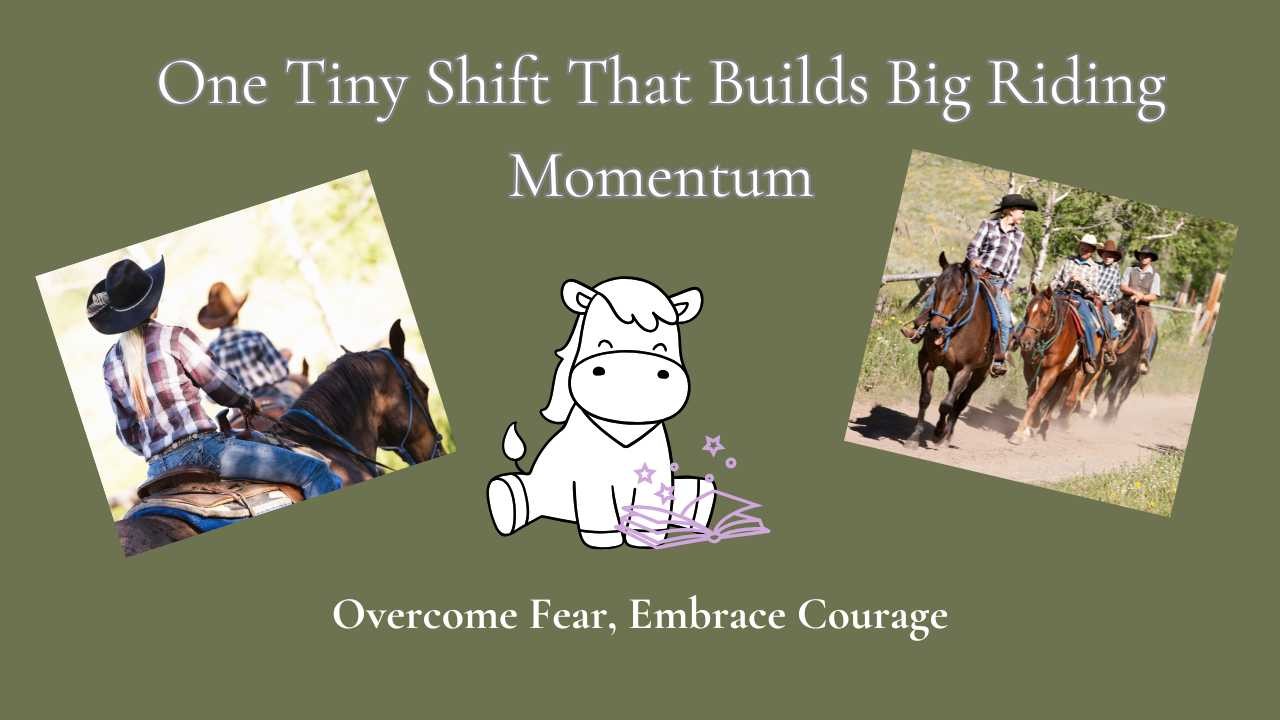
I spent years getting myself ready.
Getting my horse ready.
Preparing all the details.
And still... I wasn’t riding out of the arena.
Getting my horse ready.
Preparing all the details.
And still... I wasn’t riding out of the arena.
What I didn’t realize was that the one tiny thing that would change everything was also the simplest:
I took action.
I got on and rode four steps.
That’s it. Just four.
But those four steps were like magic.
I celebrated. I smiled for a week.
And the next time? I looked forward to four more.
I celebrated. I smiled for a week.
And the next time? I looked forward to four more.
That simple, tiny action changed everything.
Momentum had begun.
Momentum had begun.
Try These Tiny Shifts to Create Big Riding Momentum:
Take Four Steps
This one’s my favorite—and for good reason.
Get on and ride four steps. Then pause.
Ask yourself:
This one’s my favorite—and for good reason.
Get on and ride four steps. Then pause.
Ask yourself:
- Do I want to take four more?
- Turn around and go back?
- Or just get off and celebrate?
On my very first four steps, I chose to get off. And I still count that as a HUGE win.
Because the action—not the distance—is what creates momentum.
Because the action—not the distance—is what creates momentum.
Make a Comfort Zone Plan
Define your edge—not someone else’s.
What feels just slightly stretchy but not scary?
That’s your zone. Make a plan that brings you to the edge—not over it.
Then stop there. Smile. Celebrate. You just moved forward.
Define your edge—not someone else’s.
What feels just slightly stretchy but not scary?
That’s your zone. Make a plan that brings you to the edge—not over it.
Then stop there. Smile. Celebrate. You just moved forward.
Too often, we think we have to leap to grow.
But the truth is, confidence is built in small, do-able steps that feel like yours.
But the truth is, confidence is built in small, do-able steps that feel like yours.
There is plenty of time to go to the edge again and again and when you are ready, these little actions you have been building up, will make going over the edge, expanding your comfort zone, easier and you will have momentum behind you!
So many times we don't see our comfort zone, or our path to momentum and that is where I can help out. Set up a quick (free) calm-ride strategy call and let's see if we can get your momentum moving again.
